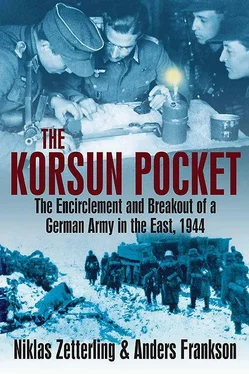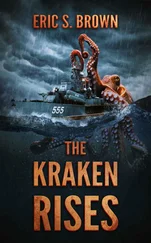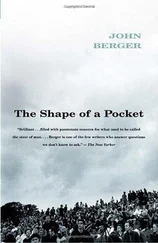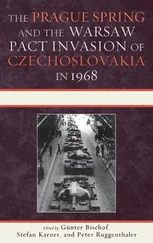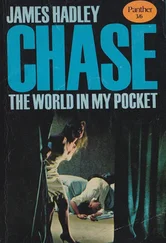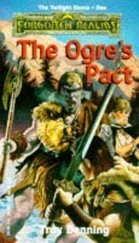Vatutin opened up the offensive with a sequence of attacks on various sectors, as he wanted to make full use of his artillery and air power on each breakthrough sector. Konstantin V. Krainyukov from the staff of the 1st Ukrainian Front was visiting 18th Army’s headquarters when the offensive started. Colonel-General Lesselidse looked tensely at his wristwatch and said in a low voice: “Now, God of War, you have the first word.”
The artillery opened up their barrage and the Katyushas fired. Lesselidse continued with a loud and cheerful voice: “This music one can enjoy, two hundred barrels for each breakthrough kilometer.” 26
The Red Army had improved its ability to concentrate artillery. At Stalingrad, for example, the number of guns and mortars had been less than 80 for each kilometer of front at breakthrough sectors. At the Dnepr, more than double that number of guns was available.
When the breakthroughs had been achieved, the tanks were sent into the breach, but the attack did not run smoothly. Colonel Yakubovskii, commander of 91st Independent Tank Brigade in 3rd Guards Tank Army, recalled:
The second day of the operation started with adverse conditions. On the morning of 25 December the weather become worse. Once more heavy rain fell. The roads turned into mud. This made it much harder to bring the second echelon forward, as well as resupplying with ammunition and fuel.
Despite poor weather, the Soviet offensive gained ground. Vatutin managed his troops as they pushed the Germans back another 100 kilometers. However, he had to attend other affairs, too.
Late on 6 January a U.S. military delegation arrived at Kiev for a visit, headed by Major General D. H. Connolly, commanding general of the Persian Gulf command. The delegation had left Moscow on 3 January and made stops at Orel and Kursk. It also visited Zhitomir and its surroundings, before returning to Moscow on 16 January. The purpose of the journey was to study Soviet supply facilities, thus very little data on operations was gathered. Amongst other things, the report of the mission discussed the level of destruction that the war had caused to Soviet society. For example, in January 1944, Orel had a population of 55,000 compared to 110,000 before the war. Even more telling, when the Red Army liberated Orel in August 1943, the city only had a population of 25,000. The main railroad yards and buildings had been completely destroyed by the Germans during their retreat, but by January 1944 about 60% had been rebuilt. Similar data on Kursk, which had been liberated in February 1943, was available. Although the city had been in Soviet hands for almost a year, air raids during the summer battles around the city had damaged important parts of it, such as the railroad system. In January 1944 the capacity of the railroads at Kursk was about 60% below the prewar level. The city itself was not as damaged as Orel but the prewar population had been reduced from 120,000 to 60,000.
Kiev had also been severely damaged. As the U.S. military delegation arrived, the trolley lines were just starting to operate again. Its members travelled by motor cars to Zhitomir and arrived there just ten days after the Red Army had retaken the city. It was estimated that 30–40% of city was destroyed, but the electric power plant and a beer factory were still operating. On the buildings in the city it was posted that all men between 17 and 35 had to register at the city commandant. The purpose was to round up new recruits for the Red Army. Newly liberated areas were an important source for replacements. For example, during February–March 1944 the 1st Front and the 1st Belorussian Front gathered 76,000 recruits from areas they were located in. 27
On 14 January, just before the U.S. delegation embarked on its journey back to Moscow, Vatutin ordered his armies to assume a defensive position. The offensive had cost him over 100,000 casualties, but the Germans had not yet been beaten. Field Marshal von Manstein ordered a counterstroke which was given the ironic name “Operation Watutin.” It was to be conducted by two Panzer corps from General Hans-Valentin Hube’s 1st Panzer Army. Hube intended to cut off the Soviet tank forces by conducting a two-pronged attack.
Konev Attacks Kirovograd, 5 January
In the meantime, General Konev had prepared a major Russian offensive further to the southeast. His aim was to attack towards Kirovograd. On paper, Otto Wöhler, commander of the German 8th Army, which was intended to take the brunt of Konev’s attack, had an impressive order of battle. He possessed 16 frontline divisions, five of which were Panzer divisions. Although the divisions were in poor condition, because many of them had been fighting almost continuously since July 1943, they were not taken by surprise. On 3 January, von Manstein and Wöhler had discussed the threat of a forthcoming Soviet attack and how it could be thwarted, and it was noted in the war diary of 8th Army on 4 January that a Soviet offensive was imminent.
To what extent the Soviet commanders were aware of the German situation is unclear, but they did not underestimate the task confronting them. Early in the morning of 5 January, Marshall G. K. Zhukov arrived at the staff of 5th Guards Army. General Zhadov reported on the situation in his army. After the report Zhukov commented: 28
Kirovograd may prove to be a hard nut to crack. Success in the assault is largely dependent on a swift advance by Major General Rodimtsev’s units (32nd Guards Rifle Corps) to cut off the roads utilized by the enemy in the east and by 33rd Guards Rifle Corps in the northwest. Keep a vigilant eye on the unfolding of events on the flanks of the army. The fate of the entire Kirovograd operation may well hinge on the area where 5th Guards Army is going to attack.
Zhukov’s concerns were not unfounded. The German difficulties notwithstanding, there was nothing suggesting that the Red Army would score an easy victory. Previous experience also motivated the Red Army commanders to avoid making overly optimistic assumptions.
When Konev’s artillery opened fire on the morning of 5 January, it signalled the beginning of yet another costly battle. After a barrage lasting half an hour, rifle troops supported by tanks and assault guns began to advance. General Rotmistrov, who as commander of 5th Guards Tank Army was expected to exploit a breach in the German defense lines, followed the progress of the attack:
The chilly morning of 5 January came. Dense mist covered the ground. From my observation post the trench lines and the white painted tanks were hardly visible. The fog both made us delighted and concerned. It delighted us because it would prevent the enemy from aiming accurate fire at longer distance. It caused concern that our air force would not be able to conduct its missions and thereby deprive us of air support. 29
During the first day, Rotmistrov’s troops were successful, although not overwhelmingly so. On 6 January Marshal Zhukov visited Rotmistrov and began the conversation with a very ordinary question:
“How are you getting on?”
“It goes well.”
Zhukov listened attentively to Rotmistrov’s description of the events while he checked the positions of the units as they were marked on the map. Rotmistrov reported that the enemy had offered stubborn resistance to 7th Guards Army from the very beginning of the offensive, forcing Rotmistrov to reinforce the rifle units with two of his tank brigades. Somewhat later he had been forced to commit both his tank corps. Zhukov raised his head and said:
“Do you know that Konev is transferring 8th Mechanized Corps to Zhadov’s army?”
Rotmistrov said he knew, as he had been informed by the chief of staff and continued: “I just can’t understand why the second echelon is taken from me, which should be used exploit the success and enable me to repel enemy counterattacks when encircling Kirovograd.”
Читать дальше
